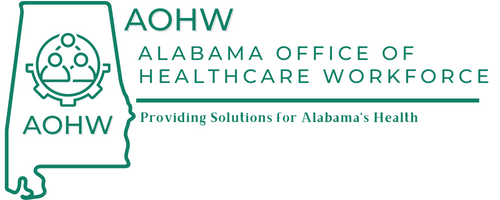Status Report of the Alabama Primary Care Physician Workforce, 2020
Summary
Access to care is identified as Alabama’s number one health issue in the 2015 State of Alabama Community Health Improvement Plan, with the most significant and universal barrier being access to a Primary Care Physician (PCP).
Based on 2020 data, in 2021 Alabama needs an additional 196 primary care physicians seeing an average of 20 patients per day, 5 days per week, 48 weeks per year, located in 52 specific population centers to eliminate Alabama’s shortage of PCPs (Figure 4).
Alabama has one Full Time Equivalent (FTE) PCP for every 2,226 residents. This ratio globally suggests that Alabama has adequate numbers of PCPs available for its 4,864,573 residents, but in Alabama the PCP shortage is the result of the current distribution of PCPs and the lack of PCP access it creates.
This report identifies Alabama’s licensed primary care physicians (PCPs), their spatial distribution and their availability to Alabama residents. This model addresses access to primary care physicians at the community level while at the same time giving direction and allowing coordination at a state level.
-
The Office for Family Health Education & Research UAB Huntsville Regional Medical Campus
William H. Coleman, MD PhD
Kyle Seigrist, PhD
Caleb Lenox, Research Associate
Alex Kearns,MS III
98% of Alabama’s PCP practices are located in 79 Alabama population centers. These population centers are towns and cities where most Alabamians currently could or do obtain direct patient access to a PCP(s). These population centers are spatially located such that 96% of Alabama’s 4,864,573 residents are within a 30 minute or less travel time from one of these 79 population centers. The Alabama county map (Figure 1) shows the location of these 79 cities and towns and the practice locations of Alabama’s PCPs (green icons). Counties are geopolitical units, they are not appropriate boundaries for defining population units (catchment areas)that can be linked to the 79 locations that house Alabama’s current PCP workforce.
Figure 2 shows Alabama’s 79 PCP population centers as points of access for residents in their catchment areas (Primary Care Service Areas or PCSAs). The boundaries of these PCSAs place each population center equidistant from all other population centers as measured by Alabama’s road network. PCSAs link PCPs in the network’s 79 towns and cities to their accessible populations in a manner that allows accurate calculation of PCP shortages based on local population demand. Towns and cities with shortages of PCPs in 2020 are denoted in red while centers in blue are population centers with an adequate number or a surplus of PCPs.
Using PCSAs instead of counties maintains Alabama’s usual designation of rural and urban areas and results in a more appropriate allocation of residents to rural or urban population centers, and PCPs, based on geographic accessibility. Figure 3 is an Alabama PCSA map color coded to identify rural and urban PCSAs, with 20 PCSAs designated as urban, and 59 designated as rural.
The results of Alabama’s PCP workforce analysis is presented in Figure 4. This table quantifies and details the results of Alabama PCP shortages in a concise, easily identifiable format. In summary, 52 population centers have a shortage of PCPs and 46 of these are rural. These population centers need a total of 195.1 additional FTE PCPs to eliminate the PCP shortage for the state as a whole. The other 27 population centers have adequate or surplus PCPs and 13 of these are rural. The PCSAs with a surplus have 502.7 more FTE PCPs than needed. In this table PCP shortages, adequate balance and surpluses are quantified at specific locations to identify not only how many PCPs are needed but also where they are needed.
98% of Alabama’s PCP practices are located in 79 Alabama population centers.
These population centers are towns and cities where most Alabamians currently could or do obtain direct patient access to a PCP(s). These population centers are spatially located such that 96% of Alabama’s 4,864,573 residents have 30 minute or less travel time access to PCPs. This map (Figure 5) shows the spatial distribution of Alabama’s towns and cities where Alabama residents have access to 98% of Alabama’s PCPs.
Conclusions
Alabama has 79 population centers identified as primary care service points based on PCP availability and population accessibility. The results table (Figure 4) serves as a template for focused needs evaluations,resource determinations and barrier assessment. It allows unique individualized community approaches, regional approaches where common issues among population centers exist, and realistic identification and consideration of issues that canto be addressed a state level.
Alabama population centers with shortages of PCPs are documented. The number of PCPs needed to resolve the shortages at these 52 population centers are documented.In addition Alabama’s FTE PCP statewide workforce is accounted for.
This analysis establishes that Alabama has a data-driven model with the capacity to accurately identify and quantify primary care workforce data, and produce annual updates. It serves as a tool to monitor outcomes and is able to project future needs based on PCP and population demographics. This model matches patient demand, based on average visits per year and average time per visit, with PCP availability, based on a standard physician workweek. Other models lack this specificity, which could result in different need computations, but most of these would identify the same service areas in need.
